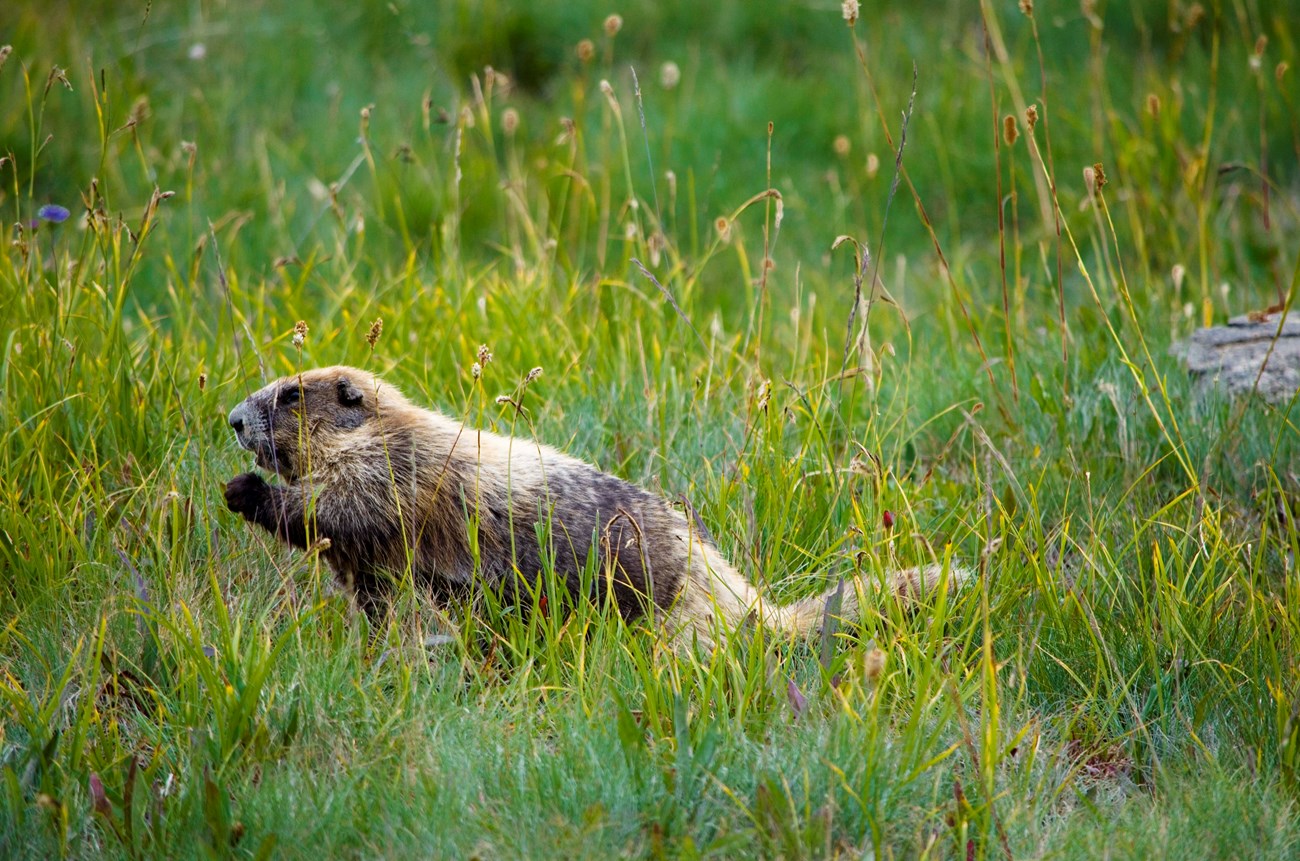
NPS photo Program Overview and Results of the 2022 Field Season2022 was the 12th year of the program, and our 6th year back after taking a year off in 2016 to analyze the data and evaluate the program. The design of the program has been pretty much the same in the past 6 years: the survey frame consists of 395 survey units in 74 clusters. There are 30 clusters in the core area - areas that I try to have surveyed every year for a more simplified look at changes over time (e.g., apples to apples); we have been able to survey these clusters pretty consistently since 2010. There are 33 clusters, including the new ones in the Hayes Fire area, that are designated to be surveyed occasionally as resources permit. The remaining clusters are no longer being assigned – mainly due to difficulty of access (e.g., the Bailey Range and Skyline). In 2022 we were able to survey for marmots at 271 units in 55 clusters; all of the 30 core clusters were surveyed, 24 in the occasional group, and one of the Skyline clusters was surveyed by an NPS monitoring crew while on other duties. In the core, 77% of the units were completely surveyed. Several teams ran into either very hot weather or bears, and 23% had either an incomplete survey, folks had low confidence in their results, or there was no survey. In the core areas, the raw occupancy was 65% for complete surveys. Range-wide the raw occupancy was 53% for completed surveys. 

We will be taking a year off from marmot monitoring in 2023. With the completion of this year’s data gathering we now have a another 6-year long chunk of data, and it is time again to take time off for analysis and evaluation. We plan to continue the program in 2024, so stay tuned.

Olympic Marmots
Learn more about the Olympic Marmot. 
Marmot Monitoring Volunteers
Teams of volunteers hike to locations within Olympic National Park to record up-to-date information about the Olympic Marmot. 
Marmot Research, Reports, and Links
Learn more about the research on Olympic Marmots. |
Last updated: May 6, 2025
